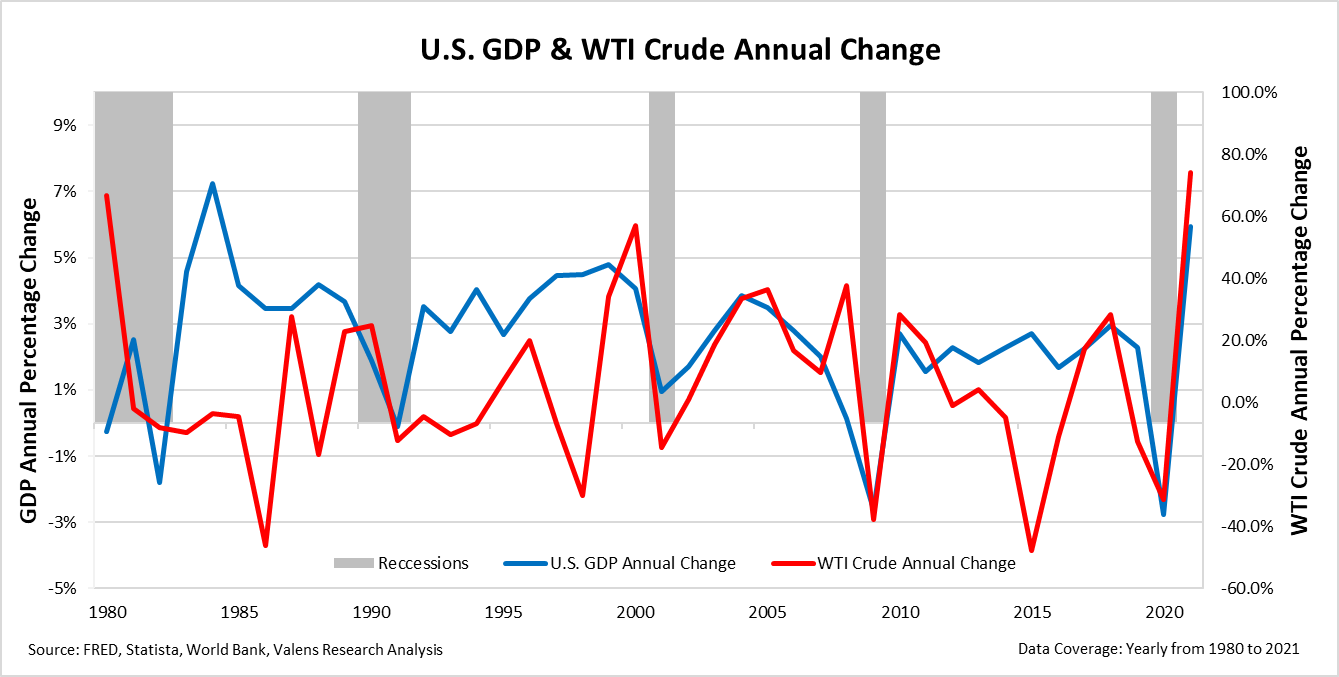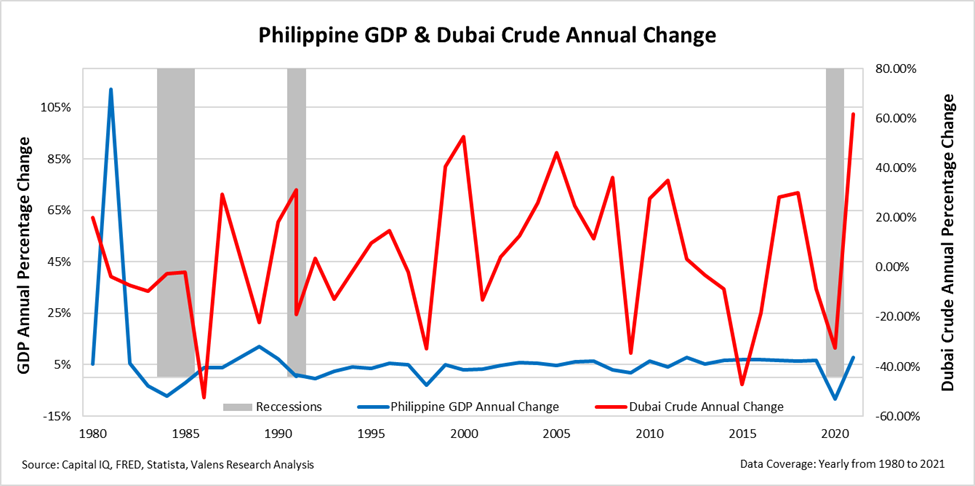PH Monday Macro: Here’s one way GDP is affected by oil prices

Whether you like it or not, the world still runs on oil. Economies still depend on oil to transport all their imports and exports in, out, and around nations. It plays a crucial part in the economic machine.
So, how does oil tell us how the economy is doing?
Philippine Markets Newsletter:
The Monday Macro Report
Powered by Valens Research
To measure the monetary value of an economy, the GDP (short for “Gross Domestic Product”) is used. The variables that go into this quantification are consumption, investments, government spending, and net exports. What is common between these aspects is that the level of each output is affected by how much a barrel of oil is.
Oil has a direct relationship with almost all the goods and services sold. This relationship exists because it is one of the inputs in the production cost of most products (and some services)—from fueling the manufacturing process to transporting goods. For that reason, it has a direct relationship with the economy.
When the cost of production is relatively low, manufacturers and sellers have some buffer to keep prices low. When that happens, consumers’ purchasing power increases. When consumers can buy more, businesses earn, then increase their spending on expansion plans in order to take advantage of this growth opportunity.
The government also benefits as higher income and spending for both consumers and corporations mean higher taxes will be remitted.
On the flip side, higher oil prices lead to higher costs. As a result, consumers will cut down their discretionary expenses, businesses will hesitate to invest and venture, and governments will postpone or slow down infrastructure projects in the short term.
In simpler terms, the consumption of oil has an inverse relationship with its price. Theoretically, when oil is cheap, this stimulates the economy. When it is expensive, it impedes the economy.
When people and entities cut down on their buying habits because of elevated oil prices, this affects the whole economy. GDP shrinks when people do not spend.
As a producer and exporter of oil, the U.S. economy benefits from higher oil prices. However, too high prices will still negatively impact the country’s productivity level, just like most countries.
In the U.S., in the past forty years, each time the annual Y-o-Y change of the WTI Crude exceeds 25%, GDP growth on an annual basis slows or dips into the negative territory.
However, in the Philippines, the impact of higher oil prices is a little muted in comparison with the U.S.
As shown in the chart, it could be observed that the GDP change Y-o-Y was not affected by the Dubai Crude price fluctuation of oil. Historically, GDP still managed to grow regardless of how expensive oil prices are.
For the U.S., oil affects the economy because it is the country’s largest export and contributes almost 8% of its total GDP. For the Philippines, its oil exports do not even amount to 0.01% of its total GDP.
The Philippine economy does not rely on such commodities to grow and function. Also, unlike other countries, despite oil volatility, the country is able to expand economically because of OFW remittance. This facet has been growing significantly in percentage to GDP for the past years.
The more commonly used drivers of contemporary economic growth do not necessarily apply to the Philippines. That is why it is important to look at an array of different indicators to predict not what the economy should do but what it is actually doing.
About the Philippine Markets Newsletter
“The Monday Macro Report”
When just about anyone can post just about anything online, it gets increasingly difficult for an individual investor to sift through the plethora of information available.
Investors need a tool that will help them cut through any biased or misleading information and dive straight into reliable and useful data.
Every Monday, we publish an interesting chart on the Philippine economy and stock market. We highlight data that investors would normally look at, but through the lens of Uniform Accounting, a powerful tool that gets investors closer to understanding the economic reality of firms.
Understanding what kind of market we are in, what leading indicators we should be looking at, and what market expectations are will make investing a less monumental task than finding a needle in a haystack.
Hope you’ve found this week’s macro chart interesting and insightful.
Stay tuned for next week’s Monday Macro report!
Regards,
Angelica Lim
Research Director
Philippine Markets Newsletter
Powered by Valens Research
www.valens-research.com






